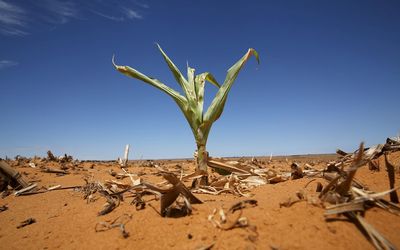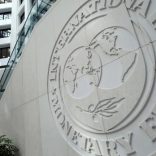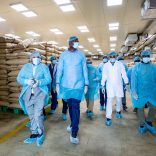Afreximbank announces high-level mission to Maputo in November to 'align on project pipeline valued ...
Southern Africa seesaws in bid to manage inflation while spurring growth

Reuters / As the worst drought since records started in 1904 decimates food crops, import costs are surging.
A severe drought in Southern Africa has triggered a surge in food prices, preventing central banks from loosening monetary policy to spur economic growth.
Central banks in SA, Zambia and Mozambique have been forced to raise interest rates to rein in inflation, after the El Niño-induced drought crippled the production of the staple maize and other crops, pushing up food prices, despite dismal economic growth prospects.
The South African Reserve Bank forecasts Africa’s most industrialised economy to grow 0.6% this year, after expanding 1.3% in 2015, partly hobbled by the drought and low commodity prices.
The Bank has hiked rates a cumulative 200 basis points since January 2014 to bring inflation within its target band of between 3% and 6%. Sanlam economic adviser Jac Laubscher said by leaving the benchmark rate at 7% at its policy meeting in May, the Reserve Bank was trying to strike a balance between fighting inflation and not depressing already weak economic growth.
“This time around they opted for growth, while at the same time making it clear that the decision to keep the repo rate unchanged should be viewed as a mere pause,” Laubscher said.
Inflation stood at 6.2% in April, but food inflation rose to 11.3% compared with 5% in the same period last year. The Reserve Bank forecasts food inflation to peak at 12% in the final quarter of 2016.
“This tightened monetary policy stance unfortunately comes at a time of very lacklustre economic growth,” said Hanns Spangenberg, an economist at NKC African Economics. “However, the central bank cannot let expectations for inflation anchor at levels above the upper range of its target range.” Also of concern was a weaker rand, which has depreciated 26% to the dollar since January 2015. The currency is vulnerable to possible downgrades to SA’s credit rating and higher US interest rates.
In Zambia, Africa’s number two copper producer, the benchmark lending rate is at a record 15.5% as the central bank fights higher inflation, which stood at 21.3% in May compared with 6.9% in May 2015.
“The cost of maize has gone up significantly and that is fuelling inflation,” Zambia’s deputy finance minister Christopher Mvunga said. “Unless we are food sufficient, central banks will struggle.” Zambia’s central bank expects inflation to average 8.7% in the fourth quarter of 2016, but analysts say the target was too ambitious.
“It is very difficult to attain single-digit inflation because our currency has been depreciating and most of the goods that we consume are imported,” said Lubinda Habazoka, an economist at the Copperbelt University.
Weaker copper prices have put pressure on Zambia’s currency and the economy. The government expects the economy to grow 3.7% this year against 3.5% last year.
Higher food prices have also pushed up annual inflation in Mozambique, which faces an imminent sovereign debt default.
Inflation stood at 17.29% in April 2016 after prices rose 1.98% in April 2015.
The central bank lifted its benchmark lending rate by 200 basis points to 12.75% in April, saying it was concerned about pronounced inflation risks caused by the drought and the sharp depreciation of the currency.












Leave a Reply
Be the First to Comment!
You must be logged in to post a comment.
You must be logged in to post a comment.